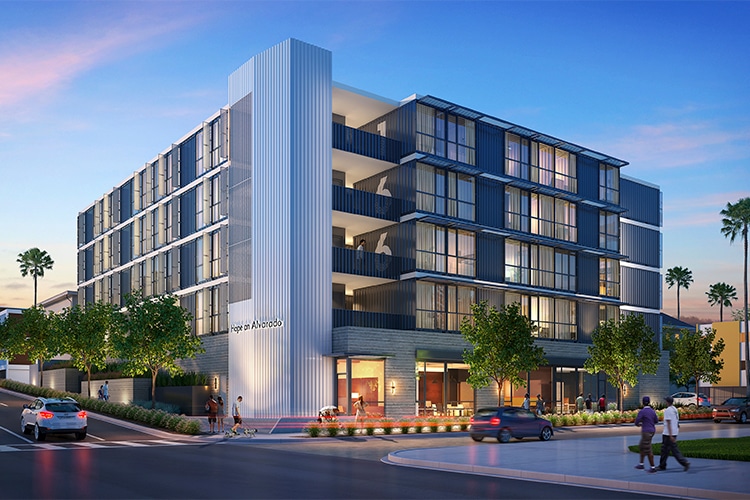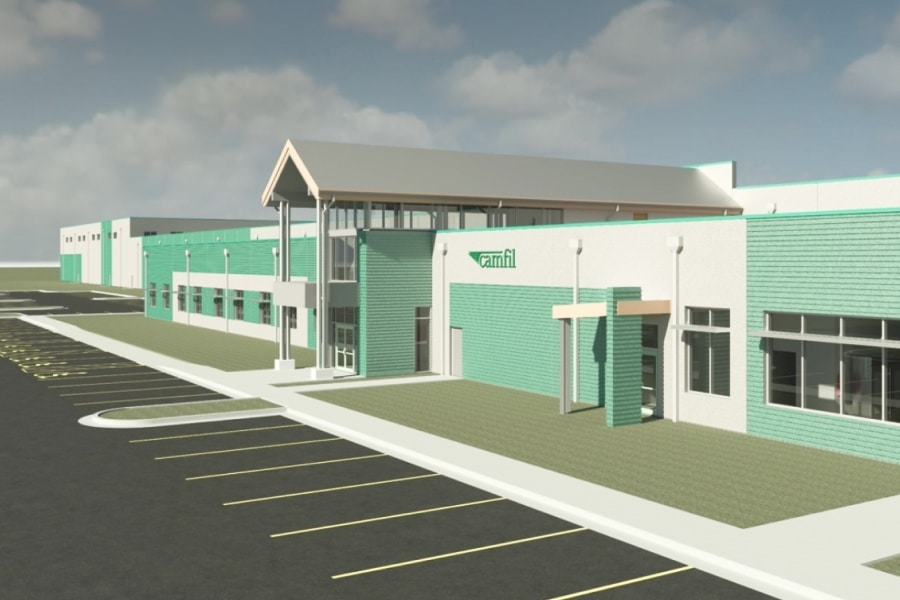Ask any economist and they’ll tell you that a lack of affordable housing is the primary culprit behind any city’s homelessness crisis. And nowhere is that correlation more apparent than in Los Angeles. From 2014 to 2017 L.A. County’s homeless population shot up from 38,089 to 55,048. After years of failed efforts of bringing affordable housing to the city’s most vulnerable population, one group of architects believe they’ve hit upon an exciting, if unusual, solution to the problem: shipping containers.
The international architecture firm KTGY Group, Inc. is spearheading an effort to retrofit shipping containers to become viable housing units. Keith Labus, a principal architect at KTGY, has nearly 20 years of experience in affordable housing with a particular focus on urban infill and mixed-use residential. Hope on Alvarado is the housing project at the center of it all.
While Labus is not the first architect to use shipping containers as housing units (similar experiments are under way in Detroit, Philadelphia, and Vancouver), the streamlined manufacturing process he’s using makes wide-scale production more feasible. Whereas other efforts in this vein have centered around repurposed containers, Labus opted to go directly to the manufacturer: in this case, HGB Steel in China. HGB already had a stellar reputation as a perfunctory operation—an attribute especially valued in manufacturing.
“We started down the road of repurposing shipping containers with Hope on Alvarado,” Labus said. “But we quickly found that because the scale of our project, capacity was an issue because there aren’t many groups that actually do the repurposing of shipping containers for something of this complexity. They do them for small retail installations or even small homes or things like that.”
Hope on Alvarado is a five-story, 84 unit apartment complex on .44 acres. It’s certainly more complicated than a small retail installation. To address this, KTGY went straight to a shipping container manufacturer.
To accommodate a housing project of this scale, HBG Steel in China has converted part of their operation into a modular housing plant.
“So basically, what we’re doing is using the same process, the same materials, same dimensional criteria to keep the transportation the same,” Labus explained. “From the time it leaves the manufacturing plant, ends up on a cargo ship, it’s shipped the same way, and stacked just like you see cargo containers. And then once it gets to the port here you can put it right onto a truck. The size is standard, so it can be taken to the site and delivered. And it works very well for this type of affordable housing because of the nature of the smaller units.”
Labus and KTGY still have plenty of work to do on the containers. “I think the biggest challenge we’re seeing right now is fireproofing the steel,” he said. “And trying to do that in the factory and making sure that the fireproofing is not damaged during transit. Once you start connecting these things together, the connections can get damaged and then they’d need to be fireproofed as well. So that’s where the challenge is.”
The first containers for Hope and Alvarado are set to arrive April 1 and completed by January 2020. Keith is especially proud of the quick timeline given its real-world implications. “If you can deliver a building six months sooner, that’s six months less that people need to be homeless. There’s definitely something there.”











